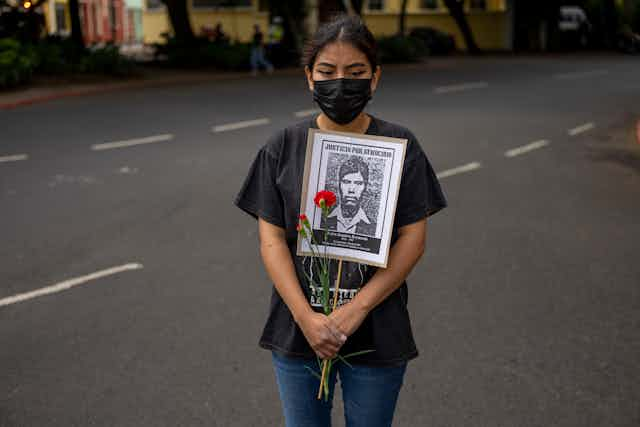After seven years of community-based research with people who immigrated as children and adolescents (called 1.5-generation immigrants) and second-generation Central Americans in Canada, something I see repeatedly come up is the impact of past violence on people whose families lived through the civil war and migration. This is historic trauma.
Historic trauma can be defined as cumulative emotional and psychological pain across generations stemming from immense collective trauma. This persists through institutionalized practices and unjust economic circumstances. Second-generation Central American experiences can be informed by an analysis of historic trauma.
In the 1980s, civil wars between military governments and leftist guerrilla movements raged in Guatemala, El Salvador and Nicaragua. Millions of Central Americans fled to the Global North as refugees.
Since the 1990s, studies have documented the long-lasting psychological impacts of the civil war and migration on Central American people in North America. These wounds from the civil war are passed on through relationships, lessons and conversations shared between survivors and their offspring.
Experiences as a second-generation Central American
I am the son of Salvadorian immigrants to Toronto. My parents migrated as refugees first to Atlanta, Ga., with the Jubilee partners, and later to Toronto in 1991.
I was in high school when the Toronto District School Board published the “Grade 9 Cohort Study: A Five-Year Analysis, 2000-2005” in 2008, which said the drop-out rate for Spanish speaking students was 40 per cent. After the report was released, I joined a study documenting young Central American men’s experiences with schooling and belonging in Toronto. These experiences made me want to conduct my own research.
Since then I have been involved in several research projects with Toronto’s Central American community. The first in 2014 was an oral history project on youth experiences with violence (yet to be published). And in 2020, I was a lead facilitator for a project called “Picturing Our Realities: Arts-based reflections with Central American youth in Canada,” which documented the perspectives of Central American youth through photography and writing.

Stories from second-generation Central Americans
These projects have given me the opportunity to meet many Central Americans in Toronto and hear their stories. Manuel (a pseudonym), migrated to Canada with his family. His father had been a guerrilla during the civil war in the 1980s. Manuel spoke of his strained relationship with his father and of watching Saturday morning soccer together, interspersed with anecdotes from the war.
Xavier (also a pseudonym), shared a story of his first year in high school. He was bullied by a senior student, who physically attacked him one day. The school administration expelled Xavier, a dark-skinned Salvadorian, instead of the senior who was Caucasian. After being expelled Xavier joined a gang, which he eventually left.
Natalie (a psuedonym) shared stories of her father’s severe PTSD from being in the Salvadorian military in the 1980s. She shared this story along with stories of hardships from growing up in a working-class immigrant family in Toronto.
Every second-generation Central American I spoke with shared traumas that relate back to the civil war. They also all spoke of the pain and discrimination that comes with being a new immigrant to Canada.
The legacy of colonialism
Many of the traumas mentioned by second-generation Central Americans are rooted in the legacies of colonialism. After Spanish colonization, Central America was subject to military rule that privileged elites and foreigners over local people. The civil wars were partially a product of the Cold War, with the United States spending over US$400 million on military assistance in the region in the 1980s to combat leftist guerrillas.
These experiences have left many Central American immigrants to deal with historic trauma. We also carry the weight of our own experiences with discrimination and marginalization. Stoires of being racially profiled by police, store owners and teachers were narratives shared in both the oral history and photography projects.

Healing from historic trauma
Despite this, I have seen many ways in which young people, 1.5- and second-generations, choose to heal and respond to this ongoing trauma with care.
In “Picturing Our Realities,” it was uplifting to see how youth learned about trauma, resistance and resilience and would share what they had learned with previous generations. Many participants engaged in volunteer work with community organizations, and some involved their families in intergenerational knowledge practices — like making vegan pupusas or planting red beans in their backyards to make Salvadorian red-bean soup. Many participants also took up careers where they felt that they could give back to their community, including law, social work and psychology.
While colonial legacies and historic trauma remain on the minds of 1.5- and second-generation migrants, they also inform the ways in which younger generations understand social justice and what is required for reconciliation and healing.
Reconciliation requires the recognition of harm in order for trauma to begin to heal. Historic trauma is one way to name the colonial violence at the root of many painful experiences of belonging to 1.5- and second-generation Central Americans in Canada.

